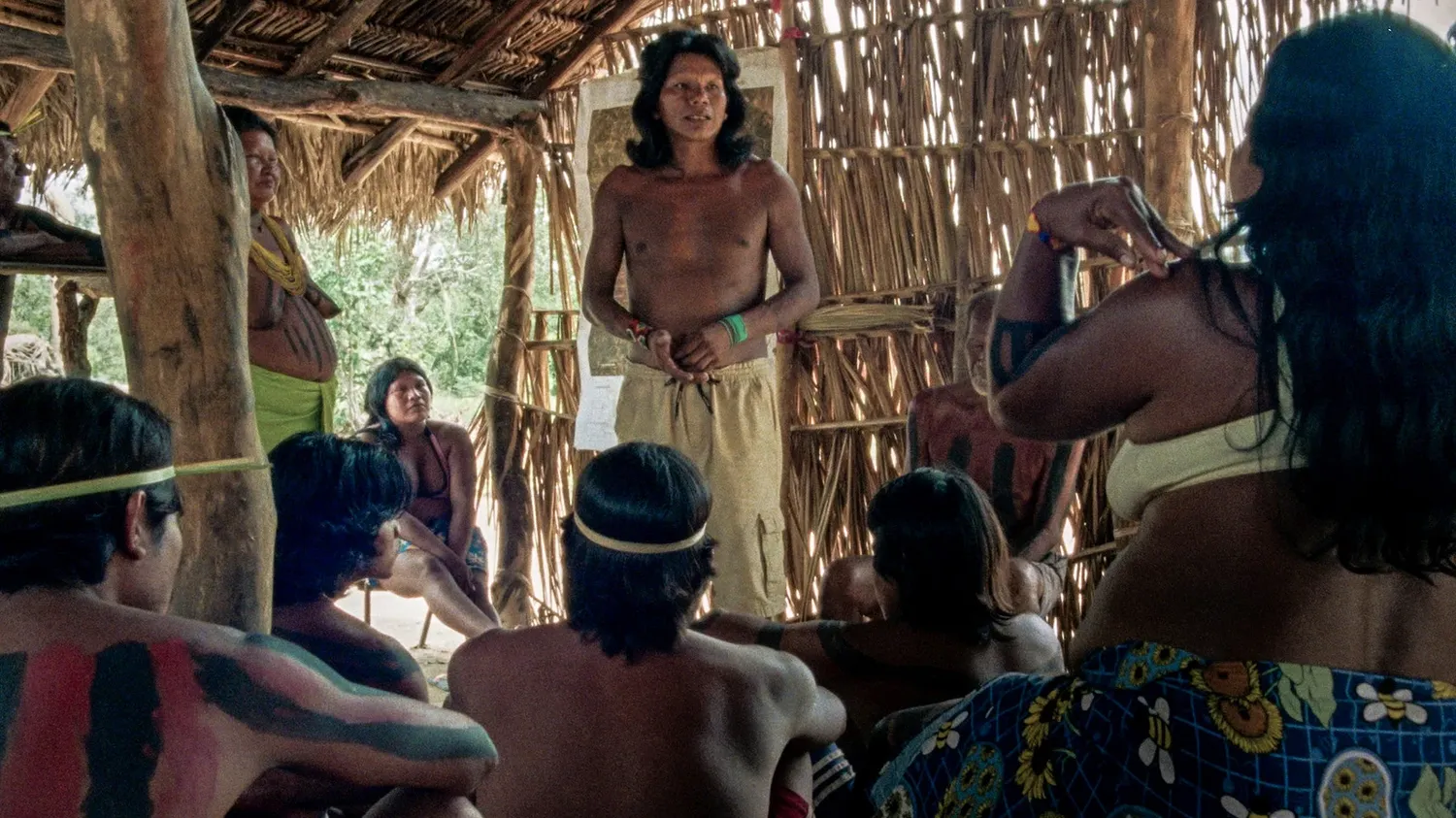Awarded Un Certain Regard in 2023 at the Cannes Film Festival, the film by João Salaviza and Renée Nader Messora campaigns for the survival of the Amazonian tribes in Brazil.
Published
Reading time: 2 min

The Amazon and its endangered peoples regularly appear on screens. Second collaboration between the Portuguese-Brazilian director João Salaviza and Renée Nader Messora, both continue the exploration and defense of a threatened territory and its peoples.
On screens since Wednesday May 1, The Flower of Burition the border of documentary and fiction, dazzles with its pictorial beauty, its animist magic and the meaning of its struggle.
In the heart of the Amazon jungle, the Krahô tribe lives far from cities, according to their ancestral beliefs and traditions, even though they have for ages been threatened with annihilation by Western civilization. The daughter of Chief Patpro recounts in three eras the tireless renewal of the forms of struggle implemented by her people, to safeguard their freedom, their life in harmony with the jungle, while their territory continues to be nibbled away by the agricultural, industrial and urban expansion.
The child’s view of the story, since it is told from his point of view, places the spectator under the umbrella of innocence. A purity that overlaps with that to which the Krahô people aspire, in their way of life. But innocence is not submission, and the story of the history of the Krahô, imbued with animist myths, is nothing but resistance to live integrated in the jungle, then, since the 16th century, to defend their territory after the arrival Westerners.
Hope
In the heart of the jungle and the village, João Salaviza and Renée Nader Messora film daily life and rites as closely as possible, while staging a fiction. Thus, it is the staging which dramatizes the story and detaches the film from the pure and simple documentary. Chief Patpro is the keystone, as a political guide to the community, and as a hero. His vocation never ceases to defend his people in the face of civilizational aggression and he draws all his prestige from it.
This process at work involves the means of information and exchange established between villages and towns, conflicts between tribes, and also their common cause which leads Patpro to demonstrate in the heart of Brazilian megacities. The Buriti Flower in the film symbolizes hope for the Krahôs, and Patpro discovers it at the very moment when he expresses his desire to go and demonstrate in Brasilia with other tribes to defend their land. The symbolic meaning of this wild flower cuts across the entire content of this beautiful humanist, political and activist film.

The sheet
Gender : Documentary-fiction
Directors : João Salaviza and Renée Nader Messora
Actors: Ilda Patpro Krahô, Francisco Hỳjnõ Krahô, Solane Tehtikwỳj Krahô
Country : Brazil / Portugal
Duration : 2:03
Exit : May 1, 2024
Distributer : Ad Vitam
Synopsis: Through the eyes of his daughter, Patpro will travel through three eras in the history of his indigenous people, in the heart of the Brazilian forest. Relentlessly persecuted, but guided by their ancestral rites, their love of nature and their fight to preserve their freedom, the Krahô never stop inventing new forms of resistance.
